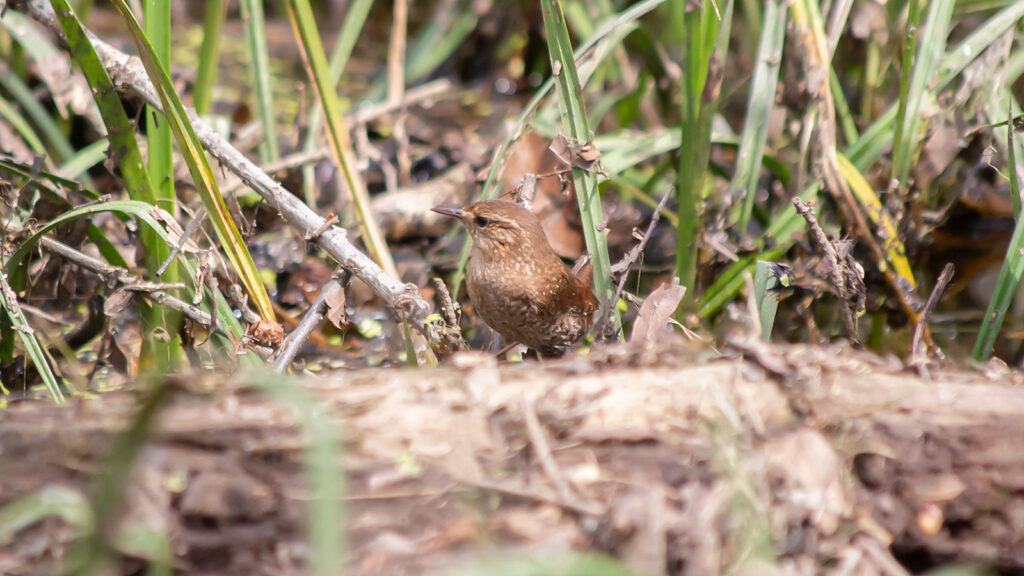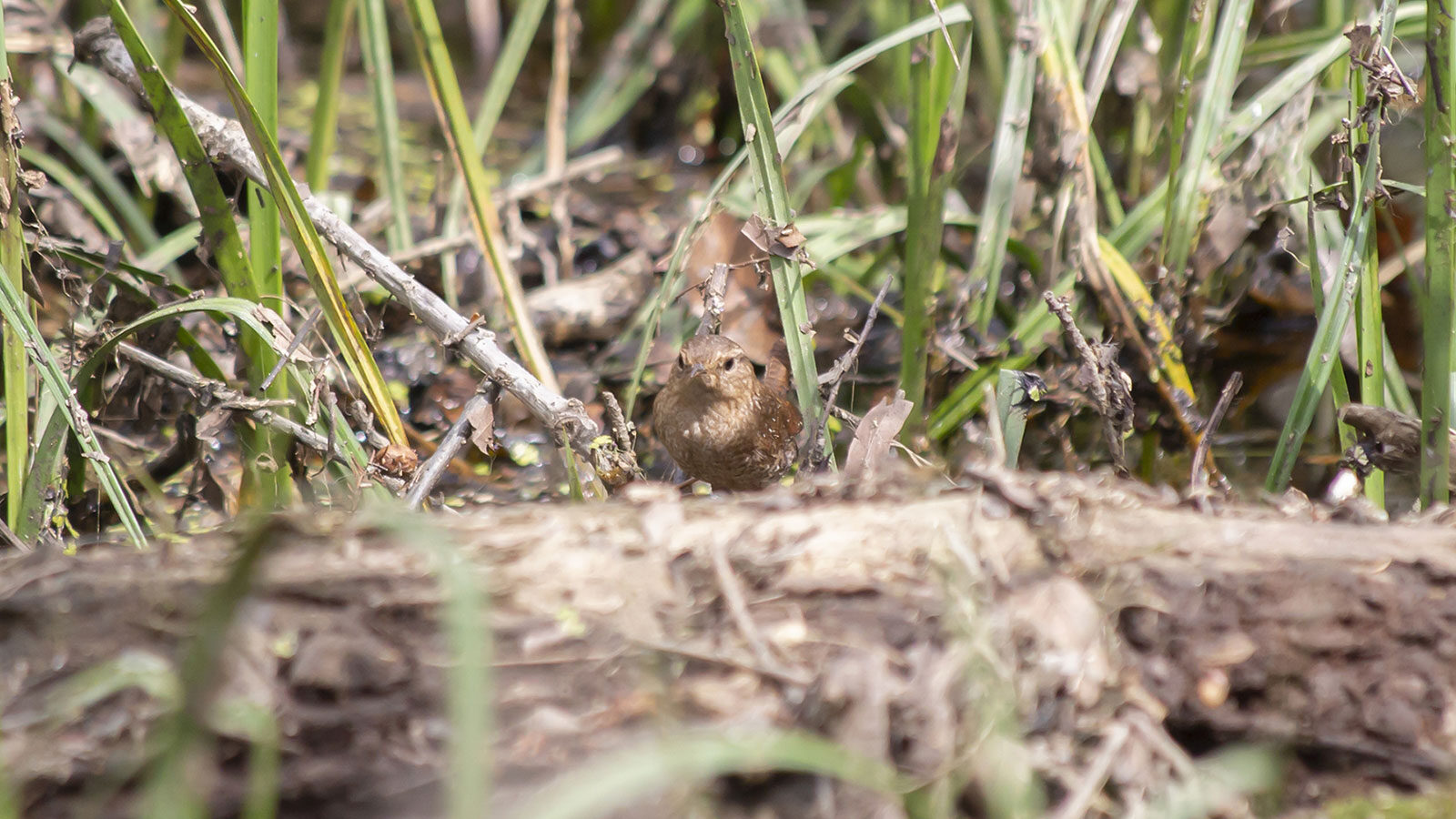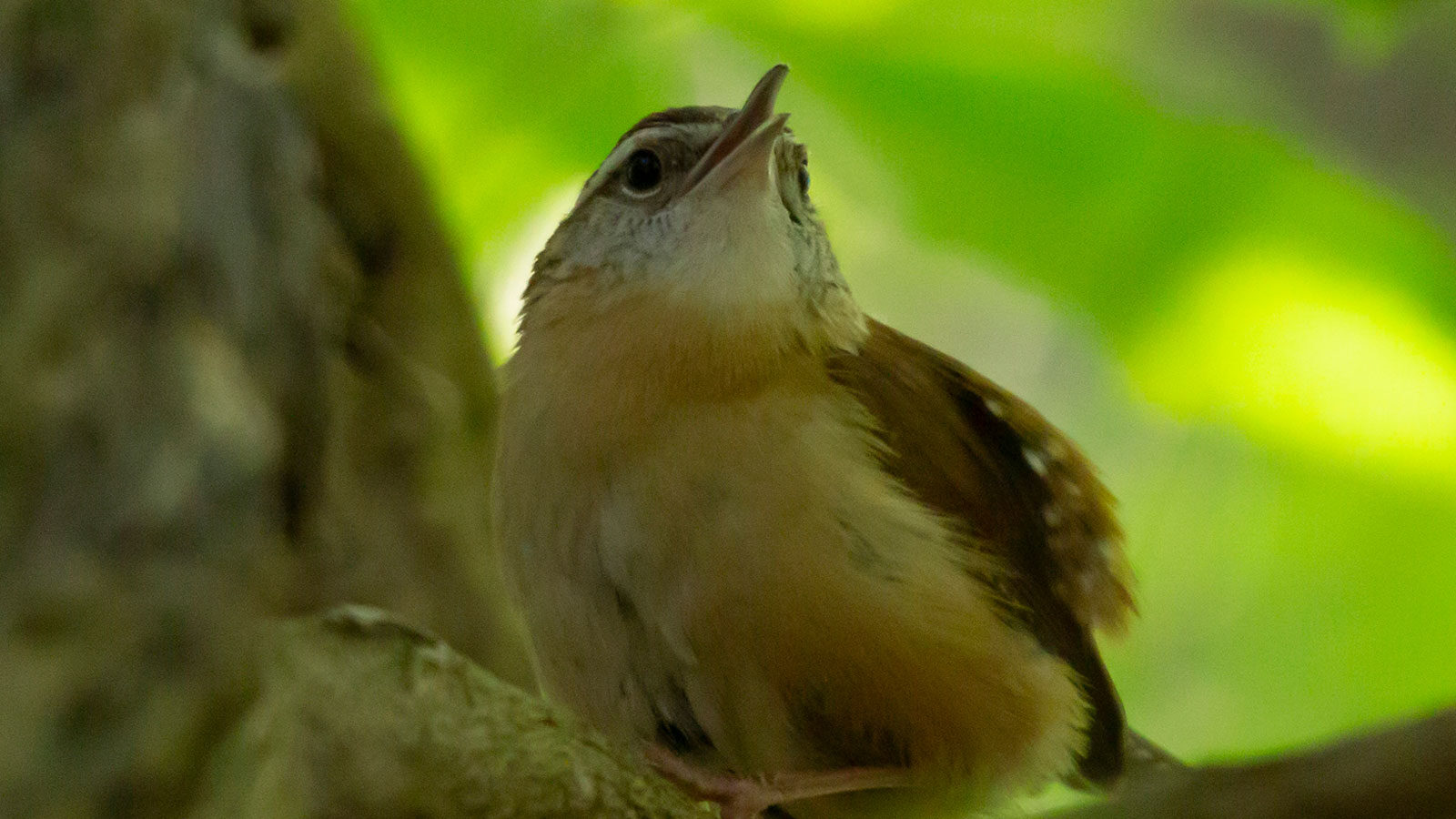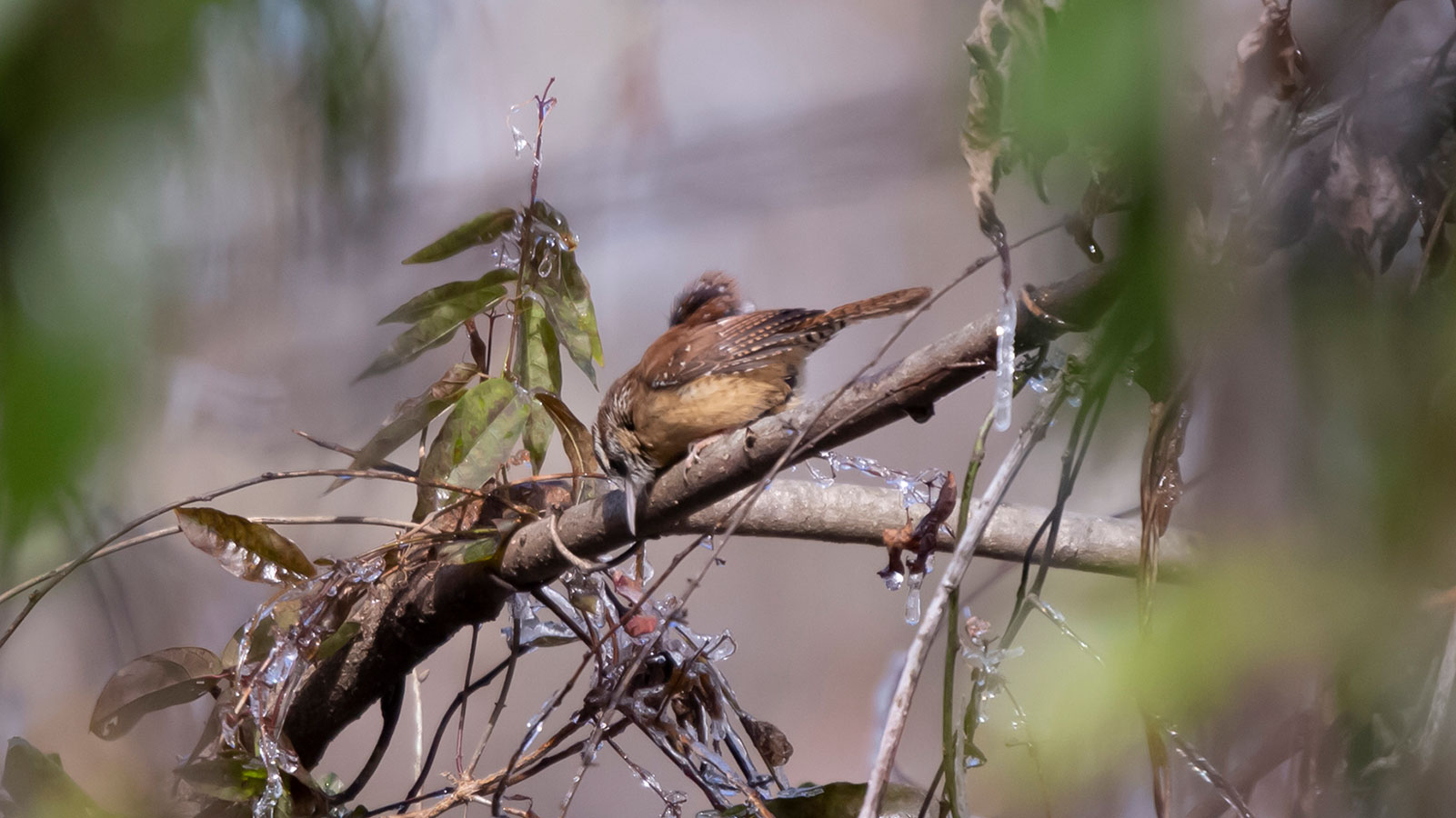
Did you know that the winter wren gets its scientific name from its habit of disappearing into tree cavities and crevices
Winter Wrens
at
a Glance

Key Features:
Winter wrens are small, plump, and brown.
Conservation Status: Least Concern - Population Trend Unknown
Habitat:
Forests
nesting habits:
Winter wrens nest in cavities lined with bark, grass, moss, and rootlets.
seasons winter wrens are active in our area:
Winter
Diet:
Berries, insects
hunting Behavior:
Winter wrens hop on the ground to forage for berries and insects.
commonly confused with:
Carolina Wrens

Winter wrens are often confused with Carolina wrens because of their brown color and small size.

Unlike Carolina wrens, who are often found in dense foliage of bushes and trees, you’ll find winter wrens hopping along the ground.